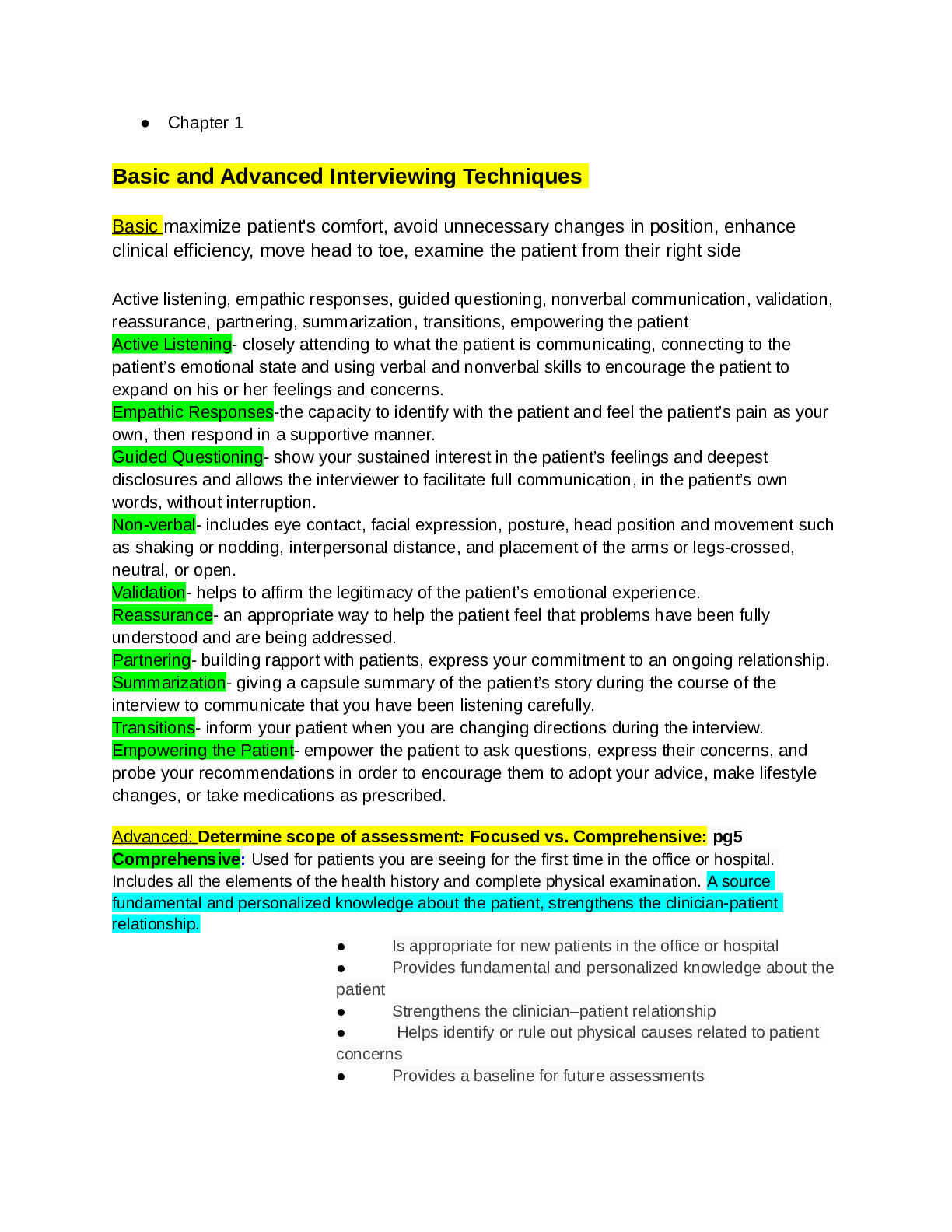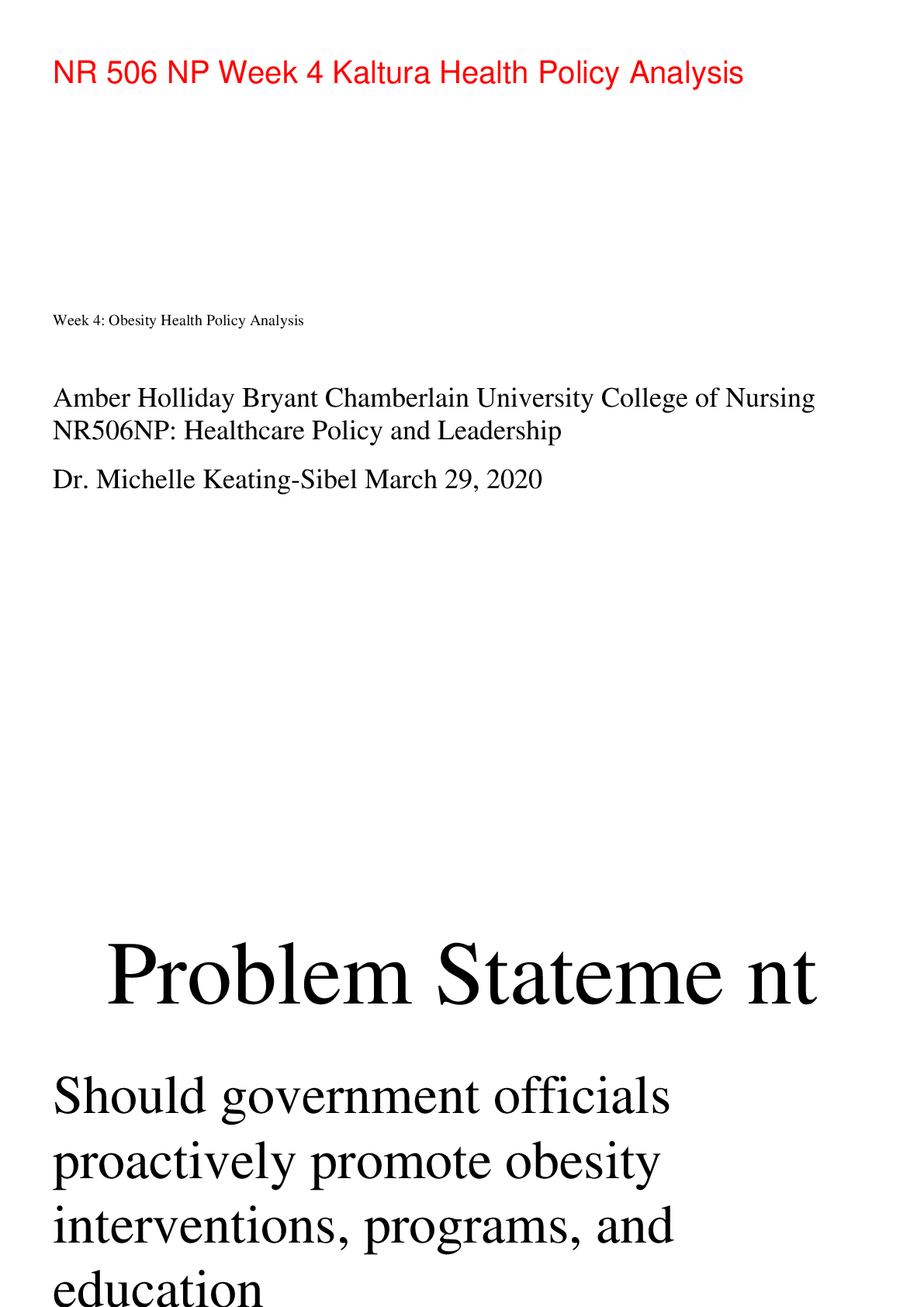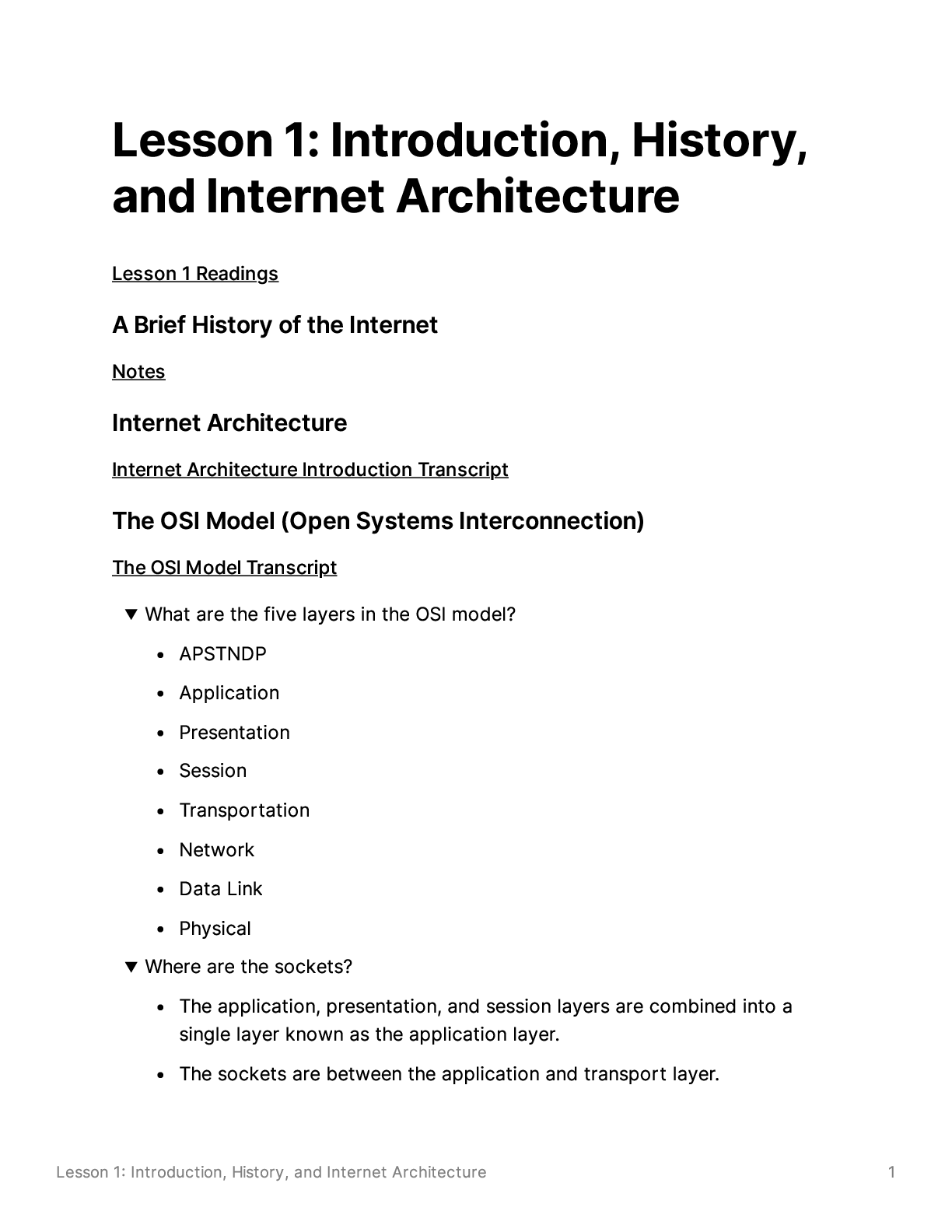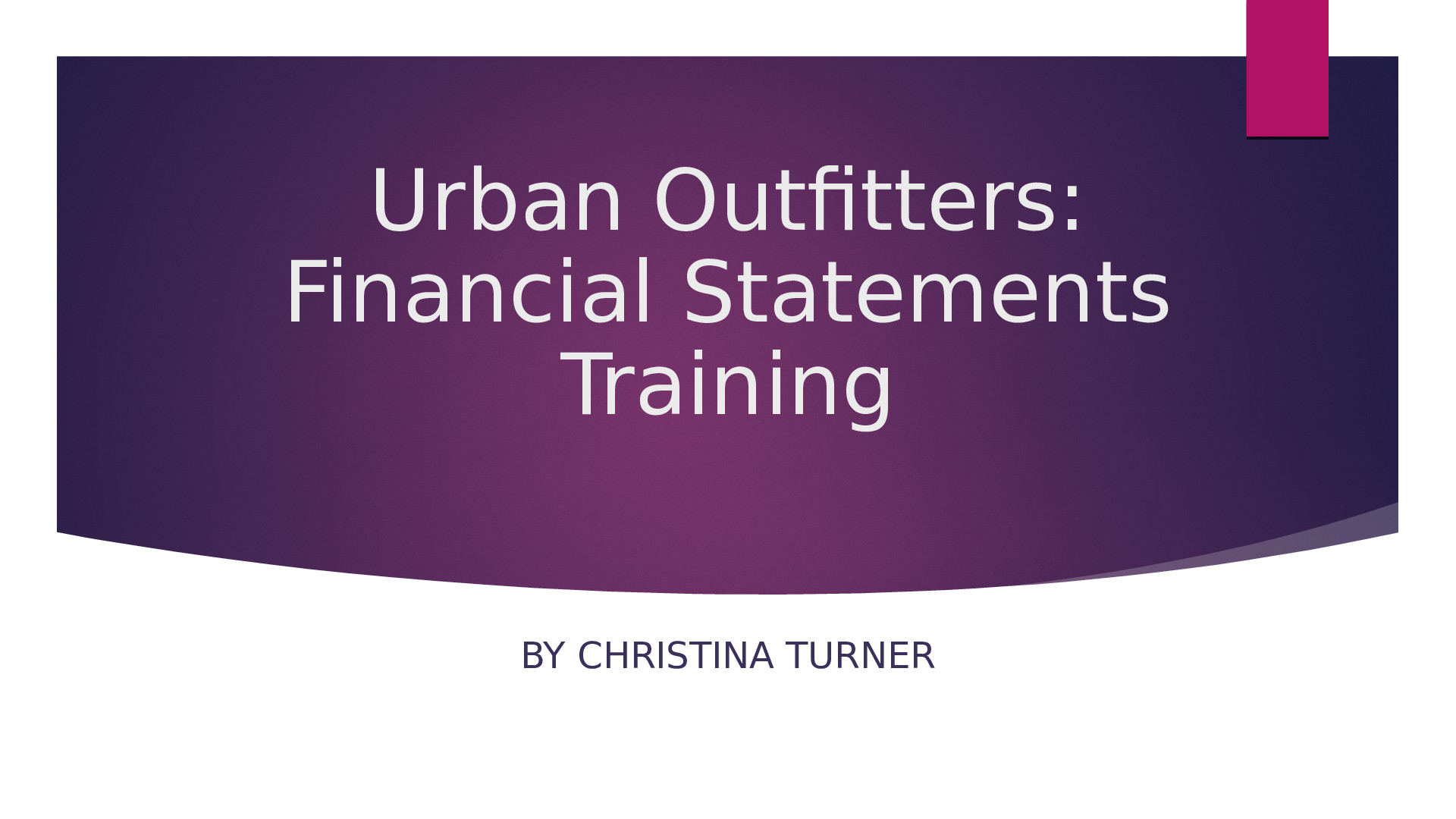Psychology > STUDY GUIDE > PSYC1101 Foundations of Psychology Northeastern UniversityPSYC 1101Exam 3 Study Guide (All)
PSYC1101 Foundations of Psychology Northeastern UniversityPSYC 1101Exam 3 Study Guide
Document Content and Description Below
PSYC1101 Foundations of Psychology Exam 3 Study Guide Sleep & Dreams 1. Understand the biology of our circadian rhythms. The circadian rhythm is the regular bodily rhythm that occurs over a ~24-ho... ur period; the biological clock It is regulated by the suprachiasmatic nucleus of the hypothalamus, which responds to morning light and triggers the pineal gland to decrease melatonin production 2. What is an EEG? An electroencephalograph is used to measure sleep - Electrodes are placed on the scalp to measure electrical activity in the cortex during sleep - Eye movements and muscle tension are also monitored 3. How long is a general sleep cycle? What are the different sleep stages? Sleep cycle is 90 minutes NREM1 - Relaxed wakefulness; alpha waves disappear; theta waves appear NREM2 - Sleep spindles (short bursts of high voltage brain activity) and K-complexes NREM3 - Deep sleep, slow wave sleep; most common REM 4. Characteristics of NREM vs. REM sleep? NREM: dreamless, slow high voltage brain waves, slow and regular heart rate, low blood pressure REM: dreams occur, rapid low voltage brain waves, irregular breathing and heart rate and involuntary muscle jerks Several brain areas become active due to an increase in acetylcholine levels at the onset of REM, but prefrontal cortex remains deactivated 5. How do our sleep cycles change throughout the night? We spend more time in NREM3 (deep, slow-wave sleep) during first 2 sleep cycles, and after that longer episodes of NREM2 and REM 6. Describe the sleep disorders we discussed in class. Insomnia – difficulty with sleep quantity or quality Hypersomnolence – excessive sleep with difficulty waking up, daytime sleepiness with long daily naps that are non-restorative Delayed Sleep Phase Type – inability to fall asleep and awaken at a desired or acceptable earlier time (usually 3-4 hours from desired time) Non-REM Sleep Arousal Disorders - symptoms occur during NREM sleep; these disorders occur most commonly in childhood and diminish in frequency with increasing age. (sleep terrors and sleepwalking) Narcolepsy – at night, fall asleep and quickly enter REM, excessive daytime sleepiness, and daytime sleep attacks; often associated with hypocretin deficiency 7. What evidence supports the theory that sleep is essential for growth and maintenance? Sleep drive increases after strenuous physical activity and long periods of activity During sleep: - Pituitary gland releases growth hormone - Increased production of new glial cells that form myelin - Maintenance of neurons in the hippocampus, amygdala and prefrontal cortex [Show More]
Last updated: 2 years ago
Preview 1 out of 7 pages

Buy this document to get the full access instantly
Instant Download Access after purchase
Buy NowInstant download
We Accept:

Reviews( 0 )
$7.00
Can't find what you want? Try our AI powered Search
Document information
Connected school, study & course
About the document
Uploaded On
Apr 28, 2021
Number of pages
7
Written in
Additional information
This document has been written for:
Uploaded
Apr 28, 2021
Downloads
0
Views
57









.png)




